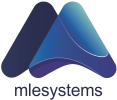Introduction to ServiceNow Audit Management
In today’s dynamic regulatory environment, organizations are under constant pressure to ensure their operations remain compliant, secure, and auditable. Traditional methods of managing audits—relying on spreadsheets, emails, and disconnected tools—are no longer sustainable in a world that demands real-time insights, proactive risk management, and continuous compliance.
ServiceNow Audit Management is a powerful, cloud-based module that enables businesses to automate and streamline the entire audit lifecycle—from planning and scoping to execution, reporting, and remediation. It offers a centralized platform where audit teams can collaborate, assign tasks, gather evidence, track progress, and align audit objectives with enterprise risk and compliance goals.
As part of the broader ServiceNow Governance, Risk, and Compliance (GRC) suite, Audit Management seamlessly integrates with other modules like Risk Management and Policy & Compliance, creating a connected ecosystem for holistic risk governance.
What is ServiceNow Audit Management?
ServiceNow Audit Management is a cloud-based solution designed to simplify and automate the entire audit process. It helps organizations plan, execute, track, and report on audits—all within a centralized platform.
The tool supports risk-based audit planning, automated task assignments, evidence collection, and real-time reporting. It integrates with other ServiceNow GRC modules like Risk Management and Policy & Compliance, enabling a connected approach to governance and compliance.
By replacing manual methods with intelligent workflows, ServiceNow Audit Management empowers teams to stay organized, reduce audit cycle times, and improve audit accuracy.
Core Capabilities of ServiceNow Audit Management
Here’s a closer look at what makes this solution stand out:
1. Centralized Audit Planning
- Define scope, audit types (internal/external), stakeholders, and timelines
- Prioritize audits based on risk scoring and compliance requirements
- Import audit plans from spreadsheets or existing systems for seamless migration
2. Automated Audit Execution
- Assign tasks based on predefined roles and workflows
- Monitor progress in real time and receive automatic alerts for delays
- Capture and store audit evidence directly in the platform
3. Findings and Remediation Tracking
- Document audit findings, categorize by severity, and assign action items
- Track remediation tasks across departments
- Set up escalation rules for overdue or high-risk findings
4. Real-Time Dashboards and Reporting
- Visualize audit status, outstanding tasks, and remediation progress
- Generate audit reports for executive stakeholders or regulators
- Filter views by entity, risk level, auditor, or timeline
5. Integration with Other GRC Modules
- Link audit items with risk registers, controls, and policies
- Trigger audits automatically based on control failures or vendor issues
- Gain a 360-degree view of your compliance posture
Why Integrate Audit Management with GRC?
Integrating Audit Management with ServiceNow GRC creates a unified system that improves visibility, efficiency, and control across your risk and compliance functions.
When audits are connected to risk registers, policies, and controls, organizations can:
- Identify and prioritize high-risk areas automatically
- Trigger audits based on policy violations or control failures
- Eliminate data silos and reduce duplication of work
- Ensure faster response to compliance gaps and emerging risks
This integration not only improves audit quality but also helps organizations move from reactive compliance to proactive risk governance—making audits a strategic part of your GRC program.
Benefits of ServiceNow Audit Management
Implementing ServiceNow Audit Management offers several key advantages that enhance compliance and audit performance across the organization:
✅ Faster Audit Cycles
Automated workflows and centralized tracking significantly reduce time spent on planning, execution, and reporting.
✅ Improved Accuracy
Real-time data collection and standardized processes minimize human error and ensure reliable audit results.
✅ Greater Visibility
Dashboards provide clear, real-time insights into audit progress, findings, and risks.
✅ Stronger Compliance
Audits are aligned with regulatory requirements, helping avoid penalties and ensure policy adherence.
✅ Enhanced Collaboration
Audit teams, compliance officers, and risk managers can work together on a single platform.
These benefits make ServiceNow Audit Management a valuable tool for organizations seeking smarter, more strategic compliance.
Conclusion
As businesses grow and regulations evolve, audit processes must become more agile, intelligent, and connected. ServiceNow Audit Management is more than just a compliance tool—it’s a strategic enabler that enhances visibility, collaboration, and control across the enterprise.
Whether you’re looking to automate internal controls testing, align with external auditors, or strengthen your overall GRC program, this platform offers the flexibility and power to scale with your needs.
Ready to Take Control of Your Audits?
At MLE Systems, we specialize in ServiceNow GRC implementation tailored to your industry and business model. Let us help you transition to smarter audits and stronger compliance.
Frequently Asked Questions (FAQ)
Q: Who typically uses ServiceNow Audit Management?
A: Internal auditors, compliance officers, risk managers, and IT governance teams are primary users. It can also be extended to vendors or third-party auditors with secure access.
Q: Can I customize audit templates?
A: Yes, the platform supports fully customizable audit checklists, workflows, notifications, and dashboards tailored to your industry standards.
Q: Is it suitable for both internal and external audits?
A: Absolutely. You can manage internal audits, regulatory audits, and even vendor audits—all within the same platform.
Q: Does it support regulatory frameworks like SOX, ISO, and GDPR?
A: Yes. It comes with built-in capabilities and can be configured to support various frameworks, policies, and regional compliance needs.

